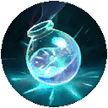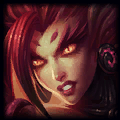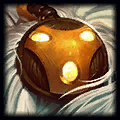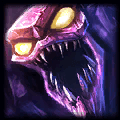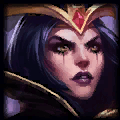
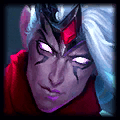
Varus vs Yone

How to Beat Yone as Varus
based on 9,188 Varus vs Yone matchupsHow We Analyze LoL Champion Counters
Varus vs Yone Matchup Summary
Best Varus vs Yone Counter Build
Items
Starter Items


Early Items


Core Varus Items



Optional Items




Summoner Spells


Skill Order



Runes
















Guide to Countering Yone as Varus
Tips for Playing as Varus against Yone
Try to take advantage of Piercing Arrow's very long range to snipe at enemy champions before a fight or as they're trying to flee.
An early point in Blighted Quiver helps harass enemy champions and get killing blows on minions.
During short range fights it's sometimes best to fire Piercing Arrow quickly, rather than charging it to full power.
Varus vs Yone Counter Stats


How to Counter Yone with Varus in LoL
The stat comparisons shown here highlight several influential Varus vs. Yone counter stats that can help us distinguish the differences between the pair. For instance, Varus’s KDA ratio ([kills + assists] / deaths) of NaN is greater than Yone’s KDA ratio of NaN, demonstrating that Varus may be more central to his team's team fighting effectiveness than Yone..
Varus often has a similar longest kill spree as his enemy does. Typically, he takes less damage than Yone. This is usually reflective of different amounts of tankyness, but it can also hint that the one champion has less agility and thus is not able to kite away from further harm when poked or engaged.
Differences between Varus and Yone
Damage Types Compared
Champion Playstyles Compared
Who is Better, Varus or Yone?
Both League champs are great. Both have their strengths, weaknesses, and counters. In the game's current meta, Varus usually loses when facing off against Yone, with a 48.3% win rate. Therefore, Varus makes a bad counter to Yone.
While Varus does have a lower winrate compared to Yone, when facing one another, Varus also has a much lower learning curve that makes him a less difficult champ to pick up and master. You still need to be cautious when picking Varus into Yone.
Moreover, Varus also has almost no amount of CC and other utility, a similar amount to Yone. This makes her just as valuable during teamfights, especially when facing champions with a lot of burst damage.
While there is not a single best champion for every situation in League of Legends, in Varus vs Yone matchups, Yone is the better champion with a lower win rate, less champion complexity, and a similar amount of utility to help out your teammates during teamfights.
Varus is a somewhat poor counter to Yone. Focus your actions on keeping up your gold and cs and clearing objectives. If you are able to do that, you should be able to stand on your own as Varus against Yone.
Other Champion Matchups Against Varus
Additional Information for Varus Players
How We Calculated Our Varus vs Yone Build and Stats
Other Useful Resources
Further Insights to Win this Matchup
If you would like to learn all of the intricacies of Varus in order to counter Yone during both the lane and mid / late game phases of League of Legends, you should keep reading to pick up a few extra tips and tricks for this matchup. If you pay attention to the build and tips displayed here, you will grow your win rate significantly and be that much closer to League of Legends pro players.
Varus often racks up a similar amount of CS relative to Yone. Champions who typically don't take many minion kills typically don't require much CS to be effective, such as support champions. These kinds of champions are able to scale properly off of their abilities and first items alone. Yet, champions with a lot of CS, such as hyper-carries, typically have to have several high cost items to be effective. In either situation, try to exceed the values reported on this page to do well.
The top items to use in your Varus versus Yone build include Edge of Night, Serylda's Grudge, and Opportunity. When Varus bought at least these three pieces in his build, he did significantly better vs Yone than with many other commonly used item sets. In fact, Varus had an average win rate of 48.3% when countering Yone with this build.
To have the highest likelihood of vanquishing Yone as Varus, Varus players should take the Hail of Blades, Taste of Blood, Eyeball Collection, Ultimate Hunter, Magical Footwear, and Biscuit Delivery runes from the Domination and Inspiration rune sets. Of all the rune sets players used for Varus vs Yone counterpicks, this composite of runes yielded the best win rate. Notably, these runes provided a 48.3% winrate overall.
By default, tips, stats, and builds on how to beat Yone as Varus are displayed for all skill levels, merged. If you want to filter the stats and builds to an individual division, you may use the selection menu at the top of this page.


























